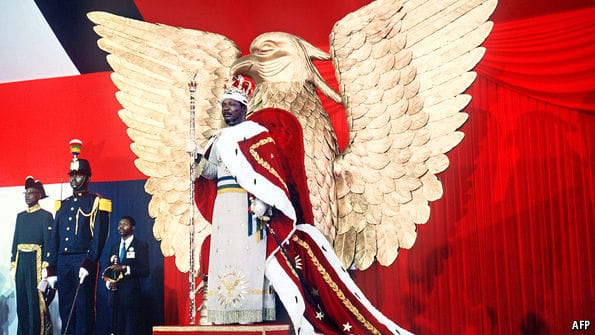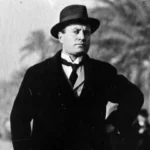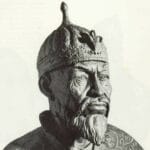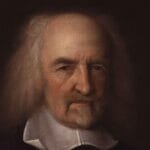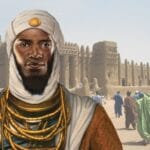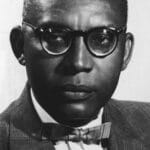Step into the extraordinary life of Jean-Bédel Bokassa, an emperor whose reign over the Central African Republic was as dramatic as it was controversial. From his humble beginnings to his lavish coronation, uncover the captivating tale of a man who ruled with an iron fist and indulged in unimaginable excess. Join us on a journey into the depths of power, ambition, and the dark underbelly of human nature, as we explore the riveting complexities of this enigmatic historical figure.
Fascinating Facts About Bokassa I
Ever heard of Emperor Bokassa I? He was this larger-than-life figure who ruled the Central African Republic, a small country in Africa. His reign, from 1966 to 1979, was anything but ordinary. Think extravagance on an entirely new level, serious human rights violations, and bizarre behavior that would make your head spin.
Want to know more? Let’s dive into some intriguing facts about this complex and controversial figure:
- Napoleon Fanatic: Bokassa I was utterly fixated on Napoleon Bonaparte. He emulated Napoleon’s style, even commissioning clothes tailored to resemble Napoleon’s outfits. He went so far as to rename streets in his capital after Napoleon’s victories. Talk about a serious case of hero worship!
- Emperor of Extravagance: In 1977, Bokassa I crowned himself Emperor in a ceremony of epic proportions. This wasn’t your average coronation — it was off the charts! He reportedly spent a staggering $20 million on the event (likely exceeding his entire country’s budget) and even had horses imported from across Europe to pull his opulent carriage.
- Diamond Drama: Driven by a thirst for personal wealth, Bokassa I decided that all the diamonds in the Central African Republic belonged to him. He banned anyone else from mining them. However, this plan backfired spectacularly, leading to a massive black market and ultimately only enriching a select few of his close associates.
- Cannibalism Rumors: This one is particularly disturbing. Rumors circulated that Bokassa I might have engaged in cannibalism. While these accusations persisted, no concrete evidence has ever definitively proven them. Nevertheless, the mere existence of such rumors adds a chilling layer to his already controversial legacy.
- French Academy Dreams: Despite being a brutal dictator, Bokassa I longed for acceptance by French intellectuals. He even attempted to join the prestigious French Academy, known for its literary giants. Can you imagine him trying to mingle with them at their meetings?
- Living Large While People Starved: While Bokassa I threw lavish parties and spent millions on himself, many in his country struggled to survive. The contrast between his lavish lifestyle and the widespread poverty in the Central African Republic was staggering.
- Awkward Vatican Encounter: In a bid to gain favor with the Catholic Church, Bokassa I invited Pope Paul VI to his extravagant coronation. However, the Pope, perhaps wary of the rumors surrounding Bokassa, politely declined the invitation.
- International Outrage: In 1979, Bokassa’s security forces committed a horrific massacre, killing numerous schoolchildren. This act sparked international outrage, and nations swiftly distanced themselves from him.
- Cousin Coup: Bokassa’s reign of terror finally ended in 1979 when his own cousin, fed up with his antics, orchestrated a military coup and removed him from power.
- Lasting Legacy of Weirdness: Even today, Bokassa I continues to fascinate historians and filmmakers. He has been the subject of numerous books and documentaries, each attempting to unravel the enigma of his reign. His story stands as a stark reminder that truth can be stranger than fiction and that unchecked power can corrupt absolutely.
What Did Bokassa Do?
Jean-Bédel Bokassa’s story is one of ambition, cruelty, and a dramatic fall from grace. A military officer who seized control of the Central African Republic in a 1966 coup d’état, he quickly consolidated his power, transforming the nation into a one-party state under his rule.
A decade after seizing control, he declared the country an empire, crowning himself Emperor Bokassa I in a lavish ceremony that likely cost more than some nations’ entire annual budgets. However, beneath the opulent façade of his self-proclaimed empire lay a brutal regime.
Bokassa ruled with an iron fist, silencing dissent and eliminating opposition. Political opponents disappeared; prisons overflowed with anyone deemed a threat. Stories of torture and extrajudicial killings became commonplace, painting a grim picture of life under his rule.
His extravagance knew no bounds, as he continued to spend lavishly on himself while his people suffered in poverty. This disregard for his people, coupled with the rampant corruption and human rights abuses, crippled the nation’s economy and led to widespread suffering.
The international community watched with growing concern. In 1979, France, the Central African Republic’s former colonial ruler, decided they had seen enough. They launched a military intervention, swiftly ousting Bokassa and restoring the republic.
Bokassa fled into exile but was eventually extradited back to the Central African Republic to face trial for his crimes. He was found guilty in absentia and sentenced to death. Although his sentence was later commuted to life imprisonment, he was pardoned and released in 1993.
Bokassa’s life was a study in contradictions— a meteoric rise to power fueled by ambition, a reign of terror marked by extravagance and brutality, and a fall from grace that left a nation reeling in its wake. It’s a story that forces us to confront the dangers of unchecked power and the importance of holding leaders accountable for their actions.
Who Overthrew Bokassa?
By 1979, the world had grown increasingly weary of Bokassa’s erratic behavior and the horrific human rights abuses occurring under his watch. France, in particular, felt responsible for the situation in their former colony and decided to take action.
The overthrow of Bokassa was a two-pronged effort. On one side, you had David Dacko, a former president who was ousted by Bokassa in the 1966 coup. Dacko, who had been living in exile, was eager to reclaim his position and rallied rebel forces within the Central African Republic to oppose Bokassa’s rule.
On the other side, you had France, who, after years of propping up Bokassa’s regime, decided to cut ties and support his removal. They launched “Operation Caban,” a military operation involving French paratroopers and the legendary French Foreign Legion. These forces, working in concert with Dacko’s rebel fighters, swiftly moved to overthrow Bokassa.
Facing overwhelming opposition both domestically and internationally, Bokassa had few options. He fled to Libya seeking refuge with Muammar Gaddafi. However, his time in exile would be short-lived. He was eventually extradited back to the Central African Republic to face trial for the atrocities committed during his reign.
Here’s a quick recap of the key players:
| Detail | Description |
|---|---|
| Main Players | France, David Dacko, Jean-Bédel Bokassa |
| French Motivation | Concerns about Bokassa’s erratic behavior, human rights abuses, and potential instability in the region. |
| Dacko’s Role | Led the rebel forces that collaborated with the French. |
| Operation Caban | The French military operation that involved paratroopers and legionnaires working alongside Central African rebels. |
| Bokassa’s Fate | Fled to Libya, extradited, sentenced to death in absentia (later commuted to life imprisonment), released in 1993. |
The overthrow of Bokassa is a complex event in African history, demonstrating the intertwined nature of internal and external forces in shaping a nation’s destiny. While the available historical accounts provide a general understanding of the events, it’s important to remember that history is rarely black and white. Further research and exploration of primary sources could reveal additional layers of complexity and nuance surrounding Bokassa’s removal from power.
If you’re interested in learning more about this period, I encourage you to explore the resources available online and in libraries. Just remember to approach the information you encounter with a critical eye and be open to different perspectives.
What are Interesting Facts about the Central African Republic?
The Central African Republic (CAR) is often defined by its tumultuous history and ongoing struggles. However, beyond the headlines lies a country rich in natural beauty, cultural diversity, and untapped potential.
Here are some fascinating facts that might surprise you:
- Resource Rich, Yet Impoverished: The CAR is a paradox. It possesses a wealth of natural resources, including diamonds, gold, oil, timber, and vast tracts of arable land. Yet, it’s ranked as one of the poorest countries globally. Years of exploitation, corruption, and conflict have prevented the CAR from translating its natural wealth into prosperity for its people.
- Landlocked and Vulnerable: The CAR’s lack of access to the sea makes it dependent on its neighbors for trade and transportation. This landlocked status makes the country particularly vulnerable to regional instability and economic shocks.
- A Wildlife Enthusiast’s Paradise: For those who appreciate the wonders of the natural world, the CAR is a dream destination. The country is home to a significant portion of the Congo Basin rainforest, the second largest rainforest on Earth. Within this verdant paradise reside gorillas, forest elephants, chimpanzees, and a plethora of bird species. The CAR is a testament to the biodiversity of our planet and a reminder of the importance of conservation efforts.
- A Flag Rich in Symbolism: The CAR’s flag is a vibrant tapestry of colors and symbols that reflects its complex history and aspirations. The blue, white, and red vertical bands represent France, acknowledging the country’s colonial past. The horizontal stripes of yellow, green, and red, along with the central red star, are pan-African colors, symbolizing the CAR’s hope for a united and prosperous Africa.
The Central African Republic is a country of stark contrasts—a land of immense natural beauty grappling with poverty and instability. It’s a place where the echoes of a turbulent past are still felt but where the potential for a brighter future remains. By delving deeper into its complexities, we can begin to appreciate the unique challenges and opportunities that the CAR faces as it strives to forge a new path forward.
What Happened to Bokassa’s Throne?
Emperor Bokassa I’s extravagant coronation in 1977 was a testament to his grandiose ambitions and desire for recognition on the world stage. The centerpiece of this opulent affair was a custom-made throne, reportedly crafted from solid gold and draped in luxurious velvet, fit for a self-proclaimed emperor.
However, following his unceremonious overthrow in 1979, the throne vanished. Its whereabouts remain a mystery to this day. Some speculate it was seized by the new government and hidden away in a warehouse, its opulent presence a stark reminder of a dark chapter in the nation’s history. Others believe it was spirited away by Bokassa loyalists, determined to preserve a symbol of his reign.
The missing throne serves as a curious postscript to Bokassa’s reign. It embodies the enigma of the man himself – a strange mix of extravagance, cruelty, and delusion. The throne, much like Bokassa I, has become the stuff of legends – a real-life mystery that continues to fascinate and intrigue.
Will the throne ever resurface? Only time will tell. Perhaps it lies forgotten in some dusty attic, awaiting rediscovery. Or maybe it will remain forever lost, its fate as elusive as the man it was built for. Until then, the mystery of Bokassa’s missing throne will undoubtedly persist, fueling speculation and adding yet another layer to the already bizarre tale of Emperor Bokassa I.
Who Was the Cannibal Dictator of the Congo?
The term “cannibal dictator” conjures images of monstrous rulers who transgress the boundaries of human decency. In the context of African dictators, two names emerge with disturbing frequency: Jean-Bédel Bokassa, who declared himself Emperor of the Central African Republic, and Mobutu Sese Seko, the long-time dictator of Zaire, now known as the Democratic Republic of the Congo.
Allegations of cannibalism swirled around Bokassa during his time in power and resurfaced during his trial in 1987. While the court heard gruesome testimonies, concrete evidence to support these claims remained elusive. Nevertheless, the accusations, coupled with documented accounts of his cruelty and erratic behavior, cemented his image as a brutal and eccentric tyrant.
Mobutu Sese Seko, who ruled Zaire from 1965 to 1997, was never officially accused of cannibalism. However, his regime was infamous for its own brand of brutality and corruption. Mobutu established a cult of personality, amassing vast wealth while his people languished in poverty. He ruthlessly silenced dissent, utilizing his security forces to eliminate opponents and instill fear in the population.
While the label “cannibal dictator” might be debated regarding these two figures, their actions undeniably left a trail of suffering and devastation in their wake. Their reigns serve as chilling reminders of the human capacity for cruelty and the devastating consequences of unchecked power.
Who Was the Cannibal Dictator of Uganda?
Idi Amin Dada, the military dictator who ruled Uganda with an iron fist from 1971 to 1979, was a figure who inspired both fear and fascination. Known for his erratic behavior, self-proclaimed titles, and brutal repression, Amin’s regime left an indelible scar on Uganda’s history. He was dubbed the “Butcher of Uganda,” a chilling epithet that reflects the brutality of his rule.
Amin’s reign was marked by human rights abuses on a massive scale. Estimates of those killed under his regime range from 300,000 to 500,000. He expelled Uganda’s Asian population, a move that devastated the economy. His paranoia led him to purge the army and execute those he perceived as threats, often based on little more than rumors and suspicion.
Amin’s brutality was often intertwined with bizarre pronouncements and actions. He declared himself “His Excellency President for Life, Field Marshal Al Hadji Doctor Idi Amin, VC, DSO, MC, Lord of All the Beasts of the Earth and Fishes of the Seas and Conqueror of the British Empire in Africa in General and Uganda in Particular.” He reportedly kept the severed heads of his enemies in his refrigerator and boasted of having committed acts of cannibalism.
While concrete evidence of cannibalism remains elusive, the rumors persist, fueled by Amin’s own macabre pronouncements and the undeniable brutality of his regime. Some historians argue that these rumors were part of a deliberate strategy to instill fear and discourage dissent. Others suggest they were a product of the West’s efforts to demonize him, playing into existing prejudices and stereotypes about African leaders.
Whether or not Amin engaged in cannibalism, his reign stands as a testament to the horrors that can unfold when power goes unchecked. His story remains a subject of debate and fascination, a stark reminder of the fragility of peace and the ever-present potential for darkness to take root even in the most unlikely of places.
What Did Lumumba Do?
Patrice Lumumba, a charismatic figure in the struggle for Congolese independence, played a pivotal role in shaping the destiny of the Democratic Republic of the Congo (DRC). Born in 1925, Lumumba emerged as a prominent voice in the movement for independence from Belgian colonial rule. He founded the Mouvement National Congolais (MNC), a political party that advocated for Congo’s self-determination.
In the country’s first democratic elections held in May 1960, Lumumba’s MNC secured a resounding victory. On June 30, 1960, he became the DRC’s first Prime Minister, a testament to his popularity and the hopes he embodied for a free and prosperous Congo.
As Prime Minister, Lumumba faced immense challenges. The country was deeply divided along ethnic and regional lines, and the Belgian government seemed determined to undermine his leadership. He sought to navigate the complexities of the Cold War, adopting a non-aligned foreign policy that aimed to secure the DRC’s interests without becoming entangled in the superpower rivalry between the United States and the Soviet Union.
However, Lumumba’s time in office was tragically cut short. On January 17, 1961, he was assassinated in a plot widely believed to have involved Belgian and American intelligence agencies. His death threw the newly independent Congo into chaos, sparking years of political instability and violence.
Despite his brief tenure, Lumumba left an enduring legacy. He became a martyr for the Pan-African movement, his name synonymous with the struggle against colonialism and the aspiration for a united and independent Africa. His words and actions continue to inspire activists and leaders who dream of a world free from oppression and exploitation.
Does the Central African Republic Have a Dictatorship?
The question of whether the Central African Republic (CAR) can be classified as a dictatorship is complex and requires nuanced consideration. Dictatorships, generally characterized by authoritarian rule, suppression of dissent, and a lack of democratic processes, often share certain characteristics:
- Centralized Power: A single person or a small group holds absolute power, with little to no accountability to the people they govern.
- Suppression of Opposition: Political opposition is either nonexistent or severely restricted. Those who dare to criticize the government risk imprisonment, torture, or even death.
- Control of Information: The media is heavily censored, and freedom of speech is curtailed. The government controls the narrative, limiting access to information that might challenge its authority.
The CAR has experienced periods of undisputed dictatorial rule. Jean-Bédel Bokassa’s reign, marked by brutality, extravagance, and his self-proclaimed status as emperor, is a prime example. Even after his overthrow, the CAR has struggled to establish democratic institutions and norms.
Since gaining independence in 1960, the CAR has witnessed a series of coups, rebellions, and political instability. Elections, when held, have often been marred by irregularities and accusations of fraud. The country has been plagued by corruption, weak governance, and a lack of accountability, creating an environment where authoritarianism can thrive.
While recent years have seen attempts to move towards a more democratic system, with elections held in 2016 and 2020, significant challenges remain. The presence of armed groups, widespread poverty, and ethnic tensions continue to undermine stability and hinder the development of democratic institutions.
So, is the CAR a dictatorship? The answer is not a simple yes or no. While the country has undoubtedly suffered under authoritarian regimes and continues to grapple with many of the hallmarks of dictatorship, there are also glimmers of hope. The desire for peace, stability, and democratic governance persists among the CAR’s people.
Whether the CAR can overcome its legacy of authoritarianism and build a more just and equitable society remains to be seen. It requires a concerted effort from both within the CAR and from the international community to support the country’s long and arduous journey towards democracy.
Who Was the First President of the Central African Republic?
The first president of the Central African Republic (CAR) was David Dacko. He assumed office upon the country’s independence from France on August 13, 1960.
Dacko’s path to the presidency began during the final years of French colonial rule. He served as Prime Minister under Barthélemy Boganda, the country’s first Prime Minister, who tragically died in a plane crash in 1959. Following Boganda’s death, Dacko stepped into the leadership vacuum, guiding the CAR towards independence.
During his presidency, Dacko maintained close ties with France, relying on their support to consolidate his power. He faced opposition from political rivals, notably Abel Goumba, who challenged his legitimacy. However, with French backing, Dacko managed to suppress opposition and maintain control.
However, his time in office was short-lived. On December 31, 1965, Jean-Bédel Bokassa, Dacko’s cousin and the army chief of staff, seized power in a military coup. Dacko was placed under house arrest, marking the end of his presidency.
Despite a relatively short tenure, Dacko’s presidency marked a pivotal moment in the CAR’s history. As the nation’s first leader, he navigated the challenges of independence, laying the groundwork for the country’s future. However, his inability to address internal divisions and his reliance on French support ultimately contributed to his downfall.
Who Won the Battle of Bangui?
The Battle of Bangui, fought in March 2013, was a pivotal event in the Central African Republic’s ongoing civil war. This battle for control of the capital city, Bangui, pitted the Séléka rebel coalition against the Central African Armed Forces (FACA) and a small contingent of South African troops stationed in the country.
The Séléka rebels, angered by the government’s failure to honor previous peace agreements and seeking to depose President François Bozizé, launched their offensive on Bangui on March 23, 2013. The rebels, estimated to number in the thousands, faced limited resistance from the poorly equipped and demoralized FACA.
The South African troops, numbering around 200, found themselves heavily outnumbered and outgunned. Despite putting up a fierce resistance, they were unable to hold back the Séléka advance. The battle raged for two days, leaving a trail of destruction and casualties in its wake.
The Séléka rebels emerged victorious, capturing Bangui and forcing President Bozizé to flee the country. Michel Djotodia, one of the Séléka leaders, declared himself president, marking the beginning of a new chapter in the CAR’s turbulent history.
The Battle of Bangui was a costly victory for the Séléka rebels. While they gained control of the capital, the fighting resulted in significant casualties on both sides, including 13 South African soldiers killed and numerous civilians caught in the crossfire. The battle also highlighted the fragility of peace in the CAR and the challenges faced by international peacekeeping efforts in the region.
The Séléka’s victory proved to be short-lived. Their rule was marked by human rights abuses and factional infighting, leading to further instability and violence. The CAR remains embroiled in conflict, with various armed groups vying for control and a humanitarian crisis gripping the nation.
Interested in exploring more fascinating figures and histories? Dive into the intriguing stories of Natasha Ryan and Larry Ellison. You can find out more about Natasha Ryan’s story here and delve into the fascinating facts about Larry Ellison here.
- Crypto Quotes’ Red Flags: Avoid Costly Mistakes - June 30, 2025
- Unlock Inspirational Crypto Quotes: Future Predictions - June 30, 2025
- Famous Bitcoin Quotes: A Deep Dive into Crypto’s History - June 30, 2025
